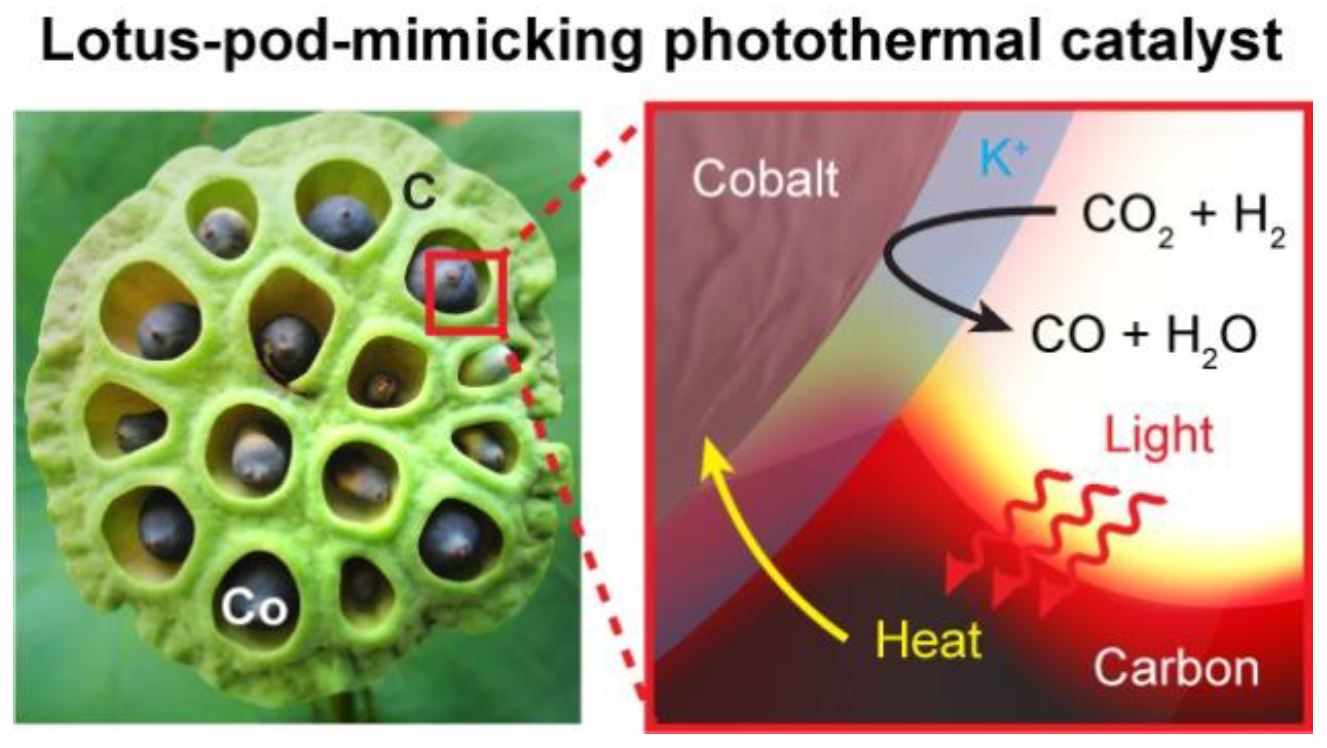Solar-Driven CO₂ Conversion via Optimized Photothermal Catalysis in a Lotus Pod Structure
Photothermal CO₂ reduction is one of the most promising routes to efficiently utilize solar energy for fuel production at high rates. However, this reaction is currently limited by underdeveloped catalysts with low photothermal conversion efficiency, insufficient exposure of active sites, low active material loading, and high material cost. Herein, we report a potassium-modified carbon supported cobalt (K⁺-Co-C) catalyst mimicking the structure of a lotus pod that addresses these challenges. As a result of the designed lotus-pod structure which features an efficient photothermal C substrate with hierarchical pores, an intimate Co/C interface with covalent bonding, and exposed Co catalytic sites with optimized CO binding strength, the K⁺-Co-C catalyst shows a record-high photothermal CO₂ hydrogenation rate of 758 mmol gcat⁻¹ h⁻¹ (2871 mmol gCo⁻¹ h⁻¹) with a 99.8% selectivity for CO, three orders of magnitude higher than typical photochemical CO₂ reduction reactions. We further demonstrate with this catalyst effective CO₂ conversion under natural sunlight one hour before sunset during the winter season, putting forward an important step towards practical solar fuel production.
Wang, H.; Fu, S.; Shang, B.; Jeon, S.; Zhong, Y.; Harmon, N. J.; Choi, C.; Stach, E.; Wang, H. Solar-Drive CO2 Conversion via Optimized Photothermal Catalysis in a Lotus Pod Structure. Angew. Chem. Int. Ed. 2023, 62 (30), e202305251. https://doi.org/10.1002/anie.202305251

